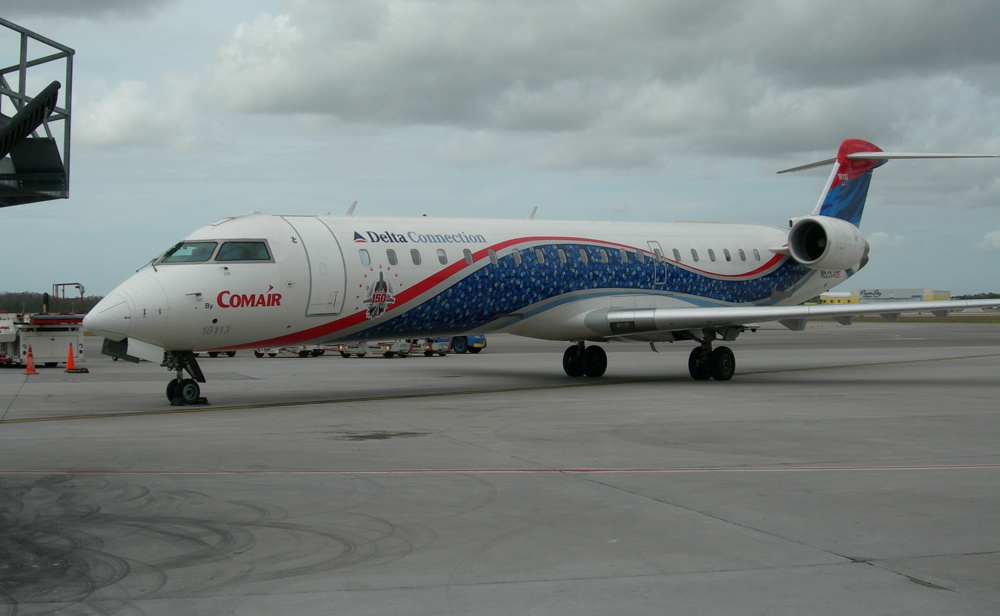
Editor’s Note: This week I welcome a previous contributor to PlaneBuzz, Frank Arciuolo. Frank has not been seen around these parts in a long time. For reasons he talks about in his latest effort. I figure he felt sorry for me after it took him two hours to read this week’s issue of PBB, and thought the environs around here had been much too quiet!
In his previous efforts in PlaneBuzz, we used a “Godzilla” rendering for his ID photo. I figured it’s time you get to see the real deal. Mud and all. Enjoy!
Hi there, Godzilla here. I know it’s been a very long time since I’ve contributed to PlaneBuzz but I’ve been preoccupied with some of the more mundane things in life – like trying to find gainful employment. My plan when I left my last job at the beginning of 2008 was to do some part time flight instruction and get a part time job as an FO on a corporate jet – I even got my CE500 type rating.However, like they did so many other people, circumstances conspired against me. Taking flying lessons is well down the list of priorities for most people now, if it makes the list at all. And right seat jobs in corporate aviation are as scarce as, well, the hair on my head.
But, I digress. Anyway, thanks to Holly for letting me fill my idle time and the pages of PlaneBuzz simultaneously.
You know the feeling an ex-airport ticket agent gets when he/she wakes up on the Wednesday before Thanksgiving, looks out the window to see dense fog – then rolls over and goes back to sleep because they are off that day? That’s the feeling I got when reading about recent events at WestJet concerning their reservations system cutover and the system cutover at JetBlue this weekend.
In my previous lives I’ve participated in about 8 reservation system cutovers; one as an airline employee and the others as an interested bystander, AKA a vendor. My advice to any IT person working at an airline that is considering switching reservations systems is to dust off the resume and start networking (the people kind). People in the reservations system business (the “biz”) often refer euphemistically to a reservations system cutover as a migration. That’s a nice word, migration. It gives one the vision of a flock of Canadian geese traveling to MIA for a nice warm winter.
However a reservations system migration, or at least the ones I’ve been involved in, does NOT resemble a migration of birds to South Beach for the winter. Picture a reservations system migration as a flock of 1 million geese leaving Canada on a Friday night. On Saturday morning nobody can find ANY geese ANYWHERE. By Saturday mid afternoon 3 million birds arrive in Tampa, but only 25% of them are actually the geese that left Canada Friday night, the rest are pigeons. By Saturday night trucks have been chartered to take ALL of the birds from TPA to MIA because nobody wants to let them out of their sight. The trucks arrive in MIA Sunday morning and are gone through manually (by IT employees) to determine which are the geese they want to keep and which are the pigeons. Sunday night the airline CEO does the math and realizes that 25% of 3 million does NOT equal the 1 million geese he had Friday night. Where are the rest of the geese? Holy crap, what’d we do with those pigeons? Resumes and bird poo simultaneously hit the mail and the fan Monday morning.
Funny story, yes, but perhaps more real than you think. Airline reservations are literally money in the bank. Moving this valuable asset from one point in cyber space to another is fraught with land mines. There are a host of technical issues that would make your eyes glaze over and I’d be happy to talk about them in detail to any other IT geeks out there, but that’s not today’s point.
Since migrating is such a gut wrenching experience where the BEST result is a zero sum gain (and the worst result is working in bird poo), don’t do it! Some cutovers are unavoidable, like the DL/NW move and whatever will eventually happen with YX/F9 and the boyz in IND. Those cases also represent mergers/acquisitions, where the party on each side of the transaction has an interest in avoiding a train wreck. Migrations that are the riskiest are the ones where an airline is changing reservations systems they may have outgrown, or perhaps for a better deal.
Traditional hosting or multi host systems are very good at high volume transactions and at communicating with Global Distribution Systems (GDS) and other systems. Because they communicate with external systems so well, traditional host systems can greatly expand an airline’s distribution reach. However, since those external systems, by design, withhold certain information from the host system (like fare basis code, form of payment, and other key customer information), the host system has difficulty figuring out of someone booking in an external system has simply reserved a seat or has actually purchased a ticket. Traditional host systems are excellent for generating large volumes of bookings and they can ensure tickets are purchased on booking within its system, but not as good as ensuring the purchase of bookings made outside its system.
The newer reservations systems are much slicker at communicating with customers within their system and with the airline’s web site, but are not very good at communicating with outside GDS and other systems. Like the traditional hosting systems, they are good at forcing the customer to purchase a ticket before ending the reservation. One big advantage they have over traditional hosting systems is that the newer systems create a database of the airline reservations. A real database allows the airline to do detailed analysis of its customers and to effectively execute Customer Relationship Marketing (CRM) to its customers based on their purchases. This type of information makes airline marketing people salivate at the possibilities for the easiest type of marketing there is – to your existing customer.
For a boutique type airline starting out that has made the decision to remain out of the GDS and its evil and expensive booking fees, the selection of a reservations system would lean towards one that allows better CRM. However if the airline grows to a point where expanding the distribution network is necessary, as is agreeing to booking fees and all the rest, they’ve chosen the wrong reservations hosting system.
It makes sense to either add the robust external communication feature to the true reservation database system, or add the relational database feature to the traditional hosting systems. The first system to truly do that will have the golden egg. However, there are immense technical challenges of taking the incredibly dense set of text files (which is really what they are) that are contained in the reservations systems of AA, UA, DL, etc. and indexing them into a relational database. That would seem to argue for a solution that “bolts on” to the big hosting system and allows both systems to do what they do best.
Until this happens, try to be on vacation the weekend your airline reservations migrate!











